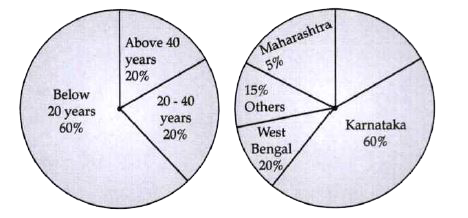Millione of chickens were killed in West Bengal, Assam, Orissa and Maharashtra. What was the reason ?
Because these were infected by birds flue disease which can cause infection to other birds. The eggs and chikens of disesed birds are not good for human consumption.
Topper's Solved these Questions
- STRATEGIES FOR ENHANCEMENT IN FOOD PRODUCTIONBook:PRADEEPChapter:STRATEGIES FOR ENHANCEMENT IN FOOD PRODUCTIONExercise:Additional Questions (SHORT ANSWER TYPE QUESTION)
Explore 30 Videos
- STRATEGIES FOR ENHANCEMENT IN FOOD PRODUCTIONBook:PRADEEPChapter:STRATEGIES FOR ENHANCEMENT IN FOOD PRODUCTIONExercise:Additional Questions (SHORT ANSWER TYPE QUESTION) Fill in the blanks :
Explore 5 Videos
- STRATEGIES FOR ENHANCEMENT IN FOOD PRODUCTIONBook:PRADEEPChapter:STRATEGIES FOR ENHANCEMENT IN FOOD PRODUCTIONExercise:NOTABLE QUESTION
Explore 3 Videos
- SEXUAL REPRODUCTION IN FLOWERING PLANTSBook:PRADEEPChapter:SEXUAL REPRODUCTION IN FLOWERING PLANTSExercise:Competition FOCUS NEET/AIIMS special (PRACTICE QUESTIONS (II. Assertion-Reason Type Questions ))
Explore 19 Videos
Similar Questions
Knowledge Check
Arrange the following Indian States in descending order from urbanisation point of view :
1. West Bengal 2. Tamil Nadu
3. Maharashtra 4. Gujarat
Select the correct answer using the codes given below :A1, 2, 3, 4B2,3,4,1C3, 4, 2, 1D4,3,2,1Analyze the information given below, considering one of the following correct options:
It is known as the golden fibre. Jute grows well on well-drained fertile soils in the flood plains where
soils are renewed every year. High temperature is required during the time of growth. West Bengal, Bihar, Assam, Odisha and Meghalaya are the major jute producing states. It is used in making gunny bags, mats, ropes, yarn, carpets and other artefacts. Due to its high cost, it is losing market to synthetic fibres and packing materials, particularly the nylon.AJuteBCottonCRubberDSilkAnalyze the information given below, considering one of the following correct options:
It is known as the golden fibre. Jute grows well on well-drained fertile soils in the flood plains where soils are renewed every year. High temperature is required during the time of growth. West Bengal, Bihar, Assam, Odisha and Meghalaya are the major jute producing states. It is used in making gunny bags, mats, ropes, yarn, carpets and other artefacts. Due to its high cost, it is losing market to synthetic fibres and packing materials, particularly the nylonAJuteBCottonCRubberDSilk
The Ganga runs its course of over 2500 km from Gangotri in the Himalayas to Ganga Sagar in the Bay of Bengal. It is being turned into a drain by more than a hundred towns and cities in Uttar Pradesh, Bihar and West Bengal that pour their garbage and excreta into it. Largely untreated sewage is dumped into the Ganges every day. In addition, think of the pollution caused by other human activities like bathing, washing of clothes and immersion of ashes or unburnt corpses. And then, industries contribute chemical effluents to the Ganga's pollution load and the toxicity kills fish in large sections of the river. Namami Gange Programme is an Integrated Conservation Mission approved as a Flagship Programme by the Union Government in June, 2014. It was launched to accomplish the twin objectives of effective abatement of pollution conservation and rejuvenation of River Ganga. The National Mission for Clean Ganga is the implementation wing set up in October, 2016.
What is the reason behind Ganga turning into a drain ?
View SolutionArrange the following states in order of their decreasing population size as per the census 2011 :
1. West Bengal
2. Bihar
3. Maharashtra
4. Andhra Pradesh
View SolutionThe pie chart describes the characteristics of India visiting UK from various states during given year. Answer the following question given below : Assume that the age wise distribution data applies to all states and that in the given year, 1,00,000 Indian visited UK:

Find the difference between visitors from West Bengal and Maharashtra in the age group of 20 - 40 years.
View SolutionBelur Math is located at:
A. West Bengal
B. Maharashtra
C. Uttar Pradesh
D. Tamil Nadu
View SolutionRead the source given below and answer the questions that follows: Iron ore and manganese are two important ferrous minerals mined in India. The two main ores of iron are magnetite and hematite. Magnetite has up to 70% iron, while hematite has 50-60% iron. Karnataka and Orissa are the main iron ore producing states in India, followed by Chhattisgarh, Goa and Jharkhand. Major iron ore producing belts of India, are: the Orissa Jharkhand belt, the Durg-Bastar-Chandrapur belt, the Bellary-Chitradurga-Chikmaglur-Tumkur belt and the Maharashtra-Goa belt. High-grade hematite is mined in the Badampahar mines in Mayurbhanj and Kendujhar districts of Orissa. The Durg-Bastar-Chandrapur belt is spread over parts of Chhattisgarh and Maharashtra. These hills contain 14 deposits of hematite. The Bellary-Chitradurga-Chikmaglur-Tumkur belt lies in Karnataka. The Kudermukh mines in this region hold one of the largest deposits of iron ore in the world. Orissa is the main manganese producing state in India, followed by Madhya Pradesh and Karnataka. The Maharashtra-Goa belt is spread over parts of Goa and Ratnagiri district of Maharashtra. Steel is a mixture of several minerals besides iron ore, and one such important mineral is manganese. The reserves of non-ferrous minerals in India are not as abundant as those of ferrous minerals. Copper and bauxite are two important non-ferrous minerals mined in India. Copper is widely used in the electrical, electronic and chemical industries.
What is the content of iron in hematite?
View Solution